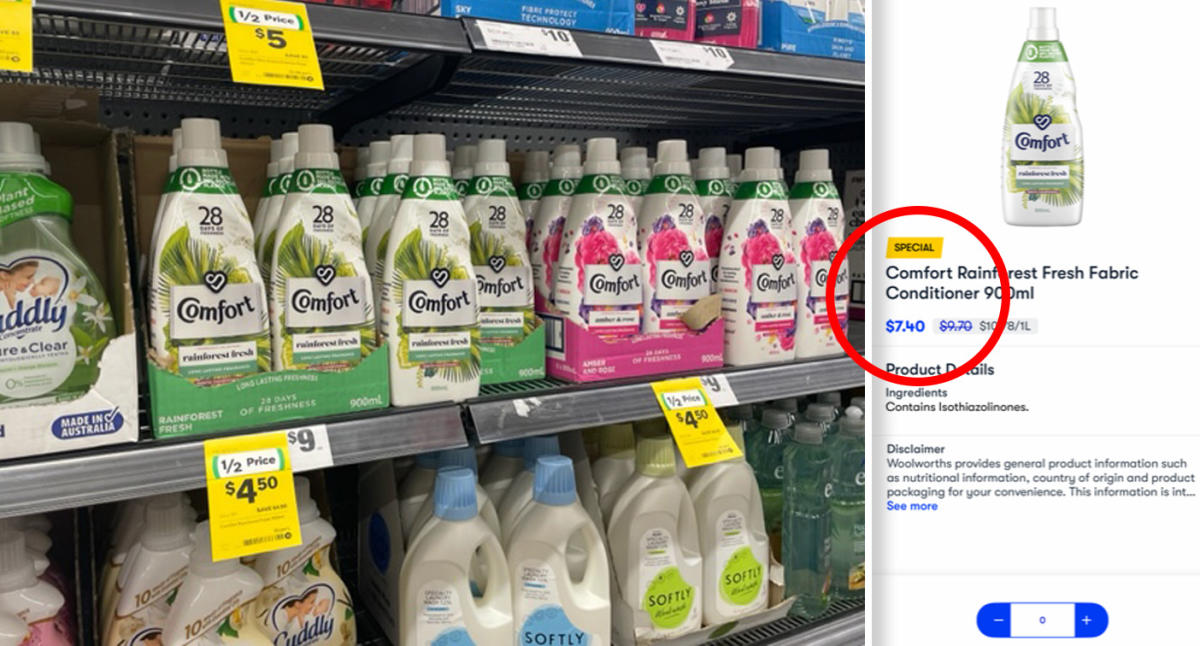Here Is The Reason Why Woolworths Customers Pay Higher Prices When Using Online App
The price difference experienced by Woolworths customers when using the online shopping app compared to shopping in-store or through other channels has garnered attention and raised questions among consumers. This price variation can be attributed to several factors. So, here is the reason why Woolworths customers pay higher prices when using online app.
Author:James DavisSep 12, 202327.1K Shares388.4K Views

The price difference experienced by Woolworths customers when using the online shoppingapp compared to shopping in-store or through other channels has garnered attention and raised questions among consumers. This price variation can be attributed to several factors. So, here isthe reason why Woolworths customers pay higher prices when using online app.
Those who use the MILKRUN app, which is "powered by Woolworths Metro," are offered special rates online that do not necessarily match those in-store and are frequently more expensive, with no apparent indication of this.
This was clear when a customer compared a laundry product accessible on the app for $7.40 on Sunday evening to the same 900ml bottle of Comfort fabric conditioner sold in store for only $4.50, a 64% increase.
There was also a pricing differential between the original and discounted prices for the fabric conditioner, with app users paying 70 cents more if the discounted rate was not available.
One of the key reasons behind the reason why Woolworths customers pay higher prices when using online app could be the concept of dynamic pricing. Dynamic pricing is a strategy used by many online retailers, including grocery stores like Woolworths. It involves adjusting prices based on various factors, such as demand, location, and time of purchase.
When customers use the Woolworths online shopping app, they are often looking for convenience and time-saving benefits. They may be willing to pay slightly higher prices for the convenience of having groceries delivered to their doorstep or prepared for pickup. Dynamic pricing allows Woolworths to adjust prices to reflect this convenience and the increased costs associated with online orders, such as delivery or packing expenses.
Operating an online shopping platform involves certain costs that are not present in traditional in-store shopping. These costs include website and app maintenance, labor for order picking and packing, and delivery or pickup expenses. To cover these additional expenses, Woolworths may adjust prices slightly higher for online customers.
The prices on the Woolworths app can also vary based on supply and demand. When certain products are in high demand, their prices may increase. This is a common practice in e-commerce and is influenced by factors such as seasonal demand, promotional periods, or specific events like holidays.
It's important to note that Woolworths, like many retailers, is transparent about its pricing strategy. Customers using the app should be aware of potential price differences, and these variations should be communicated clearly during the online shopping experience. This transparency allows customers to make informed choices about their purchases and whether they are willing to pay a premium for the convenience of online shopping.
Woolworths, as a major player in the grocery industry, operates in a competitive market. It may adjust its pricing strategy to remain competitive with other online grocery providers. This competitive environment can lead to fluctuations in pricing as retailers vie for customers' business.
Customers who are short on time may prefer this approach for "convenience," with a flat rate of $5 applied to app shoppers for delivery. There are no service fees, and deliveries are frequently made within an hour of ordering. It is thought that things through the Woolworths app are priced the same as those in store, with delivery fees of up to $15.
Conclusion
The reason why Woolworths customers pay higher prices when using online app is influenced by factors such as dynamic pricing, the costs associated with online shopping, supply and demand, transparency, competition, and consumer choice. Woolworths' pricing strategy aims to balance convenience and cost-effectiveness, allowing customers to make choices that align with their preferences and needs.
Jump to

James Davis
Author
James Davis keeps you updated daily with the best shopping tricks, hacks, and frugal living tips that you won’t find anywhere else. He also talks and writes about creative ways to save money, job opportunities like clever ways to make money from home, great jobs for teens, and online jobs that pay well.
James also enjoys working on Social Media campaigns for major brands. He believes in creating a personal relationship between the brand and its consumers. He is very much into taking the corporate out of the brand and bringing it down to the level where consumers can feel comfortable interacting and taking the brand seriously.
Latest Articles
Popular Articles